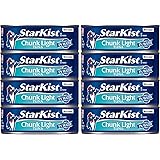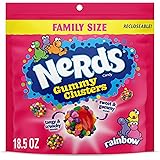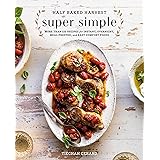The culinary world often celebrates simplicity, yet complex scientific principles frequently underpin even the most straightforward recipes. As demonstrated in the video above, a remarkable feat of confectionery is achieved with just two ingredients: chocolate and coconut milk. This basic combination, when melted and chilled, yields a surprisingly rich and creamy dessert. This elemental process masks sophisticated interactions at a molecular level. Understanding these dynamics elevates a simple treat into a profound culinary exploration.
The Science of Dairy-Free Emulsification
Chocolate, a complex mixture, contains cocoa solids and fat. Coconut milk, conversely, provides a robust emulsion of fat and water. When these two components are heated together, a new, stable emulsion is formed. Fat globules from both chocolate and coconut milk are finely dispersed. They become suspended within the aqueous phase of the coconut milk. Lecithin, a natural emulsifier present in chocolate, assists this integration. The medium-chain triglycerides (MCTs) in coconut fat further enhance stability. This careful balance prevents separation, creating a homogenous, ganache-like texture. Such an understanding is key to perfecting any chocolate coconut dessert.
Selecting Optimal Ingredients
Ingredient selection is paramount for desired outcomes. High-quality chocolate couverture is consistently recommended. Its refined texture and stable temper contribute significantly. The cacao percentage dictates bitterness and overall viscosity. Darker chocolates typically offer a more intense flavor profile. Full-fat canned coconut milk is absolutely essential. Lower-fat versions lack the required richness and stability. Often, only the thick cream from the top of a chilled can is utilized. This concentrated fat ensures a truly luxurious texture. Ingredient purity profoundly impacts the final flavor transmission. Unsweetened varieties allow precise sugar control and flavor adjustment.
Manipulating Rheology: From Melt to Mousse
The chilling process fundamentally transforms the mixture’s rheology. Chocolate fat crystals undergo intricate polymorphic transformations. Controlled cooling ensures the formation of stable beta (β) crystals. These crystals yield the desired firmness and characteristic snap. Rapid chilling, however, often results in undesirable graininess. Slow, even cooling over several hours is generally preferred. This allows for optimal crystal alignment and stability. Room temperature storage maintains a softer, more pliable texture. Refrigeration provides extended shelf life and increased firmness. The mixture’s viscosity is highly temperature-dependent. This directly impacts its final application and mouthfeel. Variations in cooling methods produce distinct textures for your chocolate coconut dessert.
Beyond Basic Ganache: Advanced Applications
This fundamental two-ingredient chocolate dessert base is incredibly versatile. It forms a remarkably robust truffle filling. Additional flavorings are effortlessly incorporated for diverse palates. A carefully whipped coconut ganache transforms into a light, airy mousse. Aeration provides volume and an exceptionally delicate texture. It serves as an exquisite, dairy-free tart filling. Its stable structure holds its form impeccably. Piped decorations, such as rosettes or intricate borders, benefit from its firmness. Precise temperature control is crucial during these artistic applications. The inclusion of spirits or extracts broadens its appeal. Coffee, orange liqueur, or peppermint oil are popular additions.
Flavor Profile Enhancement and Customization
Balancing sweet and bitter notes is a critical skill. The chocolate’s origin terroir plays a substantial role in this. A small pinch of fine sea salt subtly intensifies the chocolate’s depth. This salt contrasts sweetness effectively, creating complexity. Spices like chili powder or ground cinnamon introduce warmth and intriguing layers. These additions provide a sophisticated aromatic dimension. Fresh citrus zests offer a bright, invigorating counterpoint. Orange or lime zest pairs exceptionally well with rich chocolate. High-quality vanilla bean paste imparts a profound aromatic depth. A pure vanilla extract is also a suitable alternative. This thoughtful customization significantly elevates the simple chocolate coconut dessert into an gourmet experience. Mastery of these principles refines the culinary process. This foundational technique opens numerous creative avenues. The inherent versatility of a two-ingredient chocolate dessert allows for endless innovation.










